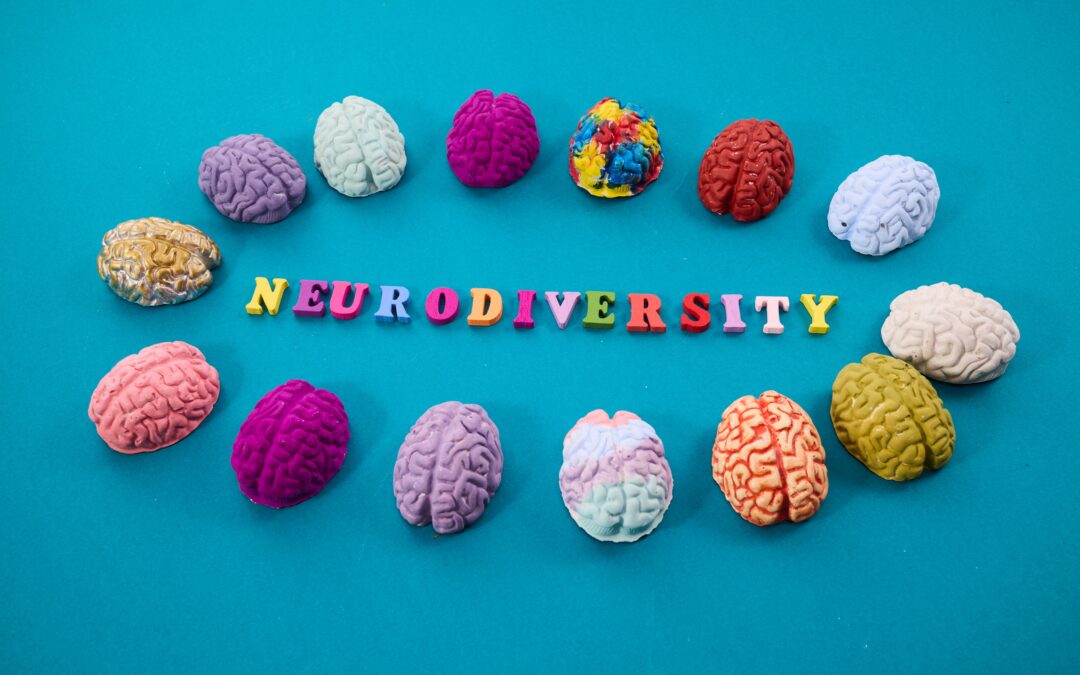The contemporary understanding of neurodivergence in the developing brain has been significantly advanced by recent neuroimaging research, providing unprecedented insights into the structural and functional differences that characterise neurodivergent brains. This exploration delves into the latest findings, focusing primarily on autism spectrum disorder (ASD) as a prominent example of neurodivergence.
Early Brain Development and Neurodivergence
Recent research has illuminated the early emergence of neurodivergent traits in brain development. A groundbreaking study by Hazlett et al. (2017) found that infants who later developed ASD exhibited accelerated brain growth between 6 and 12 months of age, particularly in cortical surface area. This early brain overgrowth was associated with the emergence of autistic social deficits in the second year of life. The findings suggest that altered brain growth trajectories may serve as early biomarkers for ASD, potentially enabling earlier diagnosis and intervention.
Structural Brain Differences in Neurodivergence
Structural magnetic resonance imaging (sMRI) studies have provided compelling evidence for abnormalities in grey matter within the social brain network in individuals with ASD. A significant finding is the decreased grey matter volume in the amygdala, a region crucial for emotional processing and social behaviour. Sato et al. (2017) highlighted that the grey matter volume in the superior temporal sulcus (STS), a region involved in interpreting social cues, was positively correlated with the ability to understand mental states based on others’ eyes in typically developing individuals but not in those with ASD.
White matter abnormalities have also been identified in neurodivergent brains. Lo et al. (2011) reported reduced tract integrity in the superior longitudinal fasciculus, which connects the STS and inferior frontal gyrus (IFG), in individuals with ASD. This reduction was associated with impairments in social interaction. Similarly, d’Albis et al. (2018) found that individuals with ASD showed reduced connectivity in short-ranged white matter regions, which was linked to difficulties in social awareness and empathy.
Functional Brain Differences and Connectivity
Functional MRI (fMRI) studies have demonstrated altered functional connectivity and atypical regional brain activity associated with social processing in ASD. A meta-analysis by Di Martino et al. (2014) of resting-state fMRI studies in ASD revealed hypoconnectivity within several large-scale brain networks, including the default mode network (DMN), as well as between subcortical regions and cortical networks. These findings suggest that ASD is characterised by widespread alterations in functional brain organisation, which may underlie the diverse symptoms observed in the disorder.
Task-based fMRI studies have provided further insights into the neural basis of social cognition deficits in ASD. For example, a study by Kana et al. (2015) found reduced activation in the medial prefrontal cortex and right temporoparietal junction during a theory of mind task in individuals with ASD compared to neurotypical controls. These regions are key components of the “social brain” network and are crucial for understanding others’ mental states.
Developmental Trajectories and Brain Plasticity
The developmental trajectory of neurodivergent brains has been a focus of recent research. Courchesne et al. (2011) proposed a model of ASD brain development characterised by early brain overgrowth followed by arrested growth and accelerated decline. This atypical growth trajectory may result in disrupted neural circuitry, particularly affecting long-distance connections in the brain.
Longitudinal studies have provided nuanced insights into developmental trajectories. Lange et al. (2015) found that while children with ASD showed accelerated brain growth in early childhood, this was followed by reduced brain volume and cortical thickness in adolescence compared to neurotypical peers. These findings highlight the dynamic nature of brain development in ASD and underscore the importance of considering developmental stage when interpreting neuroimaging results.
The concept of brain plasticity is particularly relevant to neurodivergence. Dawson (2008) proposed that early behavioural interventions for ASD might capitalise on brain plasticity to alter developmental trajectories. Recent research has provided some support for this idea. For example, a study by Green et al. (2017) found that a parent-mediated intervention for infants at high risk of ASD was associated with increased cortical activation during the processing of social stimuli.
Genetic and Environmental Interactions
The role of genetic factors in neurodivergence has been further elucidated by recent research. Twin studies have consistently shown high heritability for ASD, with estimates ranging from 64% to 91% (Tick et al., 2016). However, the genetic architecture of ASD is complex, involving both rare variants of large effect and common variants of small effect.
Recent advances in genomic technology have allowed for more comprehensive investigations of the genetic basis of neurodivergence. A large-scale whole-genome sequencing study by Satterstrom et al. (2020) identified 102 genes associated with ASD, many of which are involved in neurodevelopmental processes such as neuronal communication and chromatin remodelling.
Environmental factors also play a crucial role in shaping neurodevelopmental trajectories. Estes and McAllister (2016) reviewed evidence suggesting that maternal immune activation during pregnancy may increase the risk of neurodevelopmental disorders, including ASD. This highlights the complex interplay between genetic susceptibility and environmental influences in the aetiology of neurodivergence.
Neurodiversity Perspective
Contemporary research increasingly supports a neurodiversity perspective, viewing neurodivergence as a natural variation in human neurodevelopment rather than a disorder. Happé and Frith (2020) argue for a shift from deficit-focused models of ASD to a difference model that acknowledges both the challenges and potential advantages associated with autistic cognition. They highlight areas where autistic individuals may show superior performance, such as attention to detail and pattern recognition.
This perspective is supported by neuroimaging studies that have identified both hypo- and hyperconnectivity in autistic brains, suggesting a more complex pattern of neural differences rather than simple deficits. For example, Supekar et al. (2013) found that while children with ASD showed overall reduced functional connectivity compared to neurotypical peers, they also exhibited hyperconnectivity in subcortical-cortical circuits, which was positively correlated with symptom severity.
Implications for Diagnosis and Intervention
The advancing understanding of neurodivergent brain development has important implications for diagnosis and intervention. The identification of early brain differences, such as those found by Hazlett et al. (2017), opens up possibilities for earlier diagnosis and intervention in ASD. However, as pointed out by Lord et al. (2018), the heterogeneity of ASD presents challenges for developing universally applicable biomarkers.
Neuroimaging findings are also informing intervention approaches. For instance, understanding the atypical development of social brain networks in ASD has led to the development of targeted interventions aimed at enhancing social cognition. A study by Ventola et al. (2015) found that a pivotal response treatment for ASD was associated with increased activation in social brain regions during a social perception task.
In conclusion, recent advances in neuroimaging have significantly enhanced our understanding of neurodivergence in the developing brain. From early structural differences to altered functional connectivity and atypical developmental trajectories, these findings paint a complex picture of neurodivergent brain development. As research continues to progress, it holds the promise of informing more effective, personalised approaches to supporting neurodivergent individuals across the lifespan.
References
Courchesne, E., Campbell, K., & Solso, S. (2011). Brain growth across the life span in autism: Age-specific changes in anatomical pathology. Brain Research, 1380, 138-145.
d’Albis, M. A., Guevara, P., Guevara, M., Laidi, C., Boisgontier, J., Sarrazin, S., … & Houenou, J. (2018). Local structural connectivity is associated with social cognition in autism spectrum disorder. Brain, 141(12), 3472-3481.
Dawson, G. (2008). Early behavioral intervention, brain plasticity, and the prevention of autism spectrum disorder. Development and Psychopathology, 20(3), 775-803.
Di Martino, A., Yan, C. G., Li, Q., Denio, E., Castellanos, F. X., Alaerts, K., … & Milham, M. P. (2014). The autism brain imaging data exchange: towards a large-scale evaluation of the intrinsic brain architecture in autism. Molecular Psychiatry, 19(6), 659-667.
Estes, M. L., & McAllister, A. K. (2016). Maternal immune activation: Implications for neuropsychiatric disorders. Science, 353(6301), 772-777.
Green, J., Pickles, A., Pasco, G., Bedford, R., Wan, M. W., Elsabbagh, M., … & British Autism Study of Infant Siblings (BASIS) Team. (2017). Randomised trial of a parent‐mediated intervention for infants at high risk for autism: longitudinal outcomes to age 3 years. Journal of Child Psychology and Psychiatry, 58(12), 1330-1340.
Happé, F., & Frith, U. (2020). Annual Research Review: Looking back to look forward–changes in the concept of autism and implications for future research. Journal of Child Psychology and Psychiatry, 61(3), 218-232.
Hazlett, H. C., Gu, H., Munsell, B. C., Kim, S. H., Styner, M., Wolff, J. J., … & Piven, J. (2017). Early brain development in infants at high risk for autism spectrum disorder. Nature, 542(7641), 348-351.
Kana, R. K., Maximo, J. O., Williams, D. L., Keller, T. A., Schipul, S. E., Cherkassky, V. L., … & Just, M. A. (2015). Aberrant functioning of the theory-of-mind network in children and adolescents with autism. Molecular Autism, 6(1), 59.
Lange, N., Travers, B. G., Bigler, E. D., Prigge, M. B., Froehlich, A. L., Nielsen, J. A., … & Lainhart, J. E. (2015). Longitudinal volumetric brain changes in autism spectrum disorder ages 6–35 years. Autism Research, 8(1), 82-93.
Lo, Y. C., Soong, W. T., Gau, S. S. F., Wu, Y. Y., Lai, M. C., Yeh, F. C., … & Tseng, W. Y. I. (2011). The loss of asymmetry and reduced interhemispheric connectivity in adolescents with autism: a study using diffusion spectrum imaging tractography. Psychiatry Research: Neuroimaging, 192(1), 60-66.
Lord, C., Elsabbagh, M., Baird, G., & Veenstra-Vanderweele, J. (2018). Autism spectrum disorder. The Lancet, 392(10146), 508-520.
Sato, W., Kochiyama, T., Uono, S., Yoshimura, S., Kubota, Y., Sawada, R., … & Toichi, M. (2017). Reduced gray matter volume in the social brain network in adults with autism spectrum disorder. Frontiers in Human Neuroscience, 11, 395.
Satterstrom, F. K., Kosmicki, J. A., Wang, J., Breen, M. S., De Rubeis, S., An, J. Y., … & Buxbaum, J. D. (2020). Large-scale exome sequencing study implicates both developmental and functional changes in the neurobiology of autism. Cell, 180(3), 568-584.
Supekar, K., Uddin, L. Q., Khouzam, A., Phillips, J., Gaillard, W. D., Kenworthy, L. E., … & Menon, V. (2013). Brain hyperconnectivity in children with autism and its links to social deficits. Cell Reports, 5(3), 738-747.
Tick, B., Bolton, P., Happé, F., Rutter, M., & Rijsdijk, F. (2016). Heritability of autism spectrum disorders: a meta‐analysis of twin studies. Journal of Child Psychology and Psychiatry, 57(5), 585-595.
Ventola, P., Yang, D. Y., Friedman, H. E., Oosting, D., Wolf, J., Sukhodolsky, D. G., & Pelphrey, K. A. (2015). Heterogeneity of neural mechanisms of response to pivotal response treatment. Brain Imaging and Behavior, 9(1), 74-88.

I am an experimental psychologist and cognitive neuroscientist, working as a PhD researcher in the Centre for Cognition, Computation and Modelling at Birkbeck, University of London. My work investigates the architecture of working memory, how our highest cognitive functions develop and change across the lifespan, and the design of interventions to support cognitive health, particularly in ageing.
My professional foundation in psychology and cognitive neuroscience is built upon over fifteen years of continuous, hands-on research and applied practice. This extensive trajectory is formally validated by a portfolio of over 245 accredited Continuing Professional Development and Continuing Medical Education certificates, reflecting a sustained and profound dedication to expertise.
My work is defined by established, evidence-based concentrations in complex, high-impact areas:
-
Clinical & Neurocognitive Health: My advanced expertise encompasses the neuroscience and clinical management of degenerative diseases such as Alzheimer's, Parkinson's, and Multiple Sclerosis, alongside neurodevelopmental conditions including ADHD and Autism. I also maintain a command of trauma-informed care, epilepsy, sleep disorders, schizophrenia, and substance use disorders.
-
Women's Mental Health & Lifespan Care: A core area of my practice focuses on women's mental health, with in-depth knowledge of disorders where biological and psychological health intersect. This includes specialised proficiency in perinatal and postpartum mental health, perimenopausal and menopausal mood disorders, the psychological impact of polycystic ovary syndrome (PCOS) and endometriosis, and the mental health dimensions of breast cancer and cardiovascular disease.
-
Intervention, Innovation & Cognitive Healthspan: My concentration is in designing both cognitive rehabilitation strategies and evidence-based programmes for healthy cognitive ageing. This involves the applied use and governance of AI in healthcare, machine learning for health equity, gamification in treatment, and deploying integrated telehealth platforms to support cognitive vitality across the lifespan.
-
Inclusive Practice & Scientific Leadership: My work is grounded in expert knowledge of mental health leadership, team-based care models, and the psychology of influence. It is further informed by advanced, practical training in diversity, equity, and inclusion—with a particular focus on LGBTQ+ health, mitigating unconscious bias, and providing culturally integrated care—all governed by a rigorous framework of research ethics and science communication.
Outside of academic research, I design and build proprietary digital tools for cognitive intervention. This work is the foundation of NeuxScience, a Software-as-a-Service (SaaS) platform that I architected and developed. The system leverages my own machine learning models and data science pipelines to deliver personalised, adaptive cognitive training by integrating my research on higher order cognitive functions directly into the platform's core logic.
I am committed to making the science of the mind clear and useful. Through my writing, I aim to educate, share evidence, and show how research in cognition and brain health can be applied in everyday, meaningful ways.
In my life beyond work, I am a mother and wife, managing a very full home with three boys, four dogs, and five cats.



